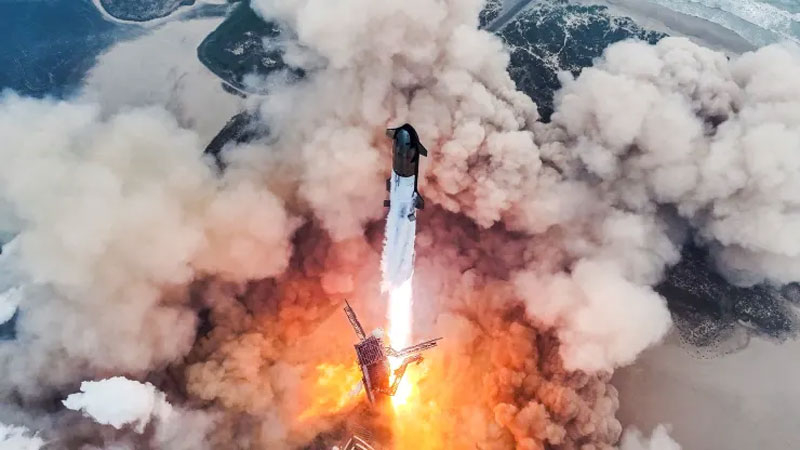It seems that SpaceX and Elon Musk personally are allowed more than others. A company may forget to send calculated missile trajectories to the regulator, safety precautions are not followed at its sites, victims do not receive compensation for work-related injuries, and many other concessions are made that would otherwise lead to criminal prosecution. Now it turns out that SpaceX is violating all regulations regarding the discharge of contaminated water into open bodies of water, which it is also in no hurry to change.

The management of SpaceX is deeply grateful for the smoke over the water. Image source: SpaceX
As CNBC has learned, SpaceX does not have official permission to place and operate a rocket engine flame suppression system on the launch pad in Boca Chica, its main site for assembling and launching Starship prototypes. The system, along with the steel base plate, was installed shortly after the ship’s first launch on April 20, 2023. The first launch took place “dry” and was accompanied by the destruction of the site with the scattering of concrete table elements throughout the surrounding area, which even led to the appearance of fires in the natural park next door.
After the incident, the company quickly built a new table with a system for supplying large volumes of water at the moment of launch. As it now turns out, SpaceX did not have permission to build the system and operate it. The company does not have such permission even today, although the system has already been used on three subsequent test launches of Starship.
SpaceX received a complaint about the unauthorized discharge of wastewater from the Boca Chica site on August 6, 2023. The document arrived at the TCEQ (Texas Commission on Environmental Quality) office in Harlingen in southern Texas, not far from the company’s Starbase base in Boca Chica. TCEQ inspectors spent over six months looking into the situation (including filing inquiries with SpaceX), after which on March 13, 2024, they notified the company of a violation of the Clean Water Act and a whole package of violated regulations.
SpaceX was required to respond within the first 30 days of being notified of the violations. However, she did this only after about 110 days. An analysis of the 483-page SpaceX report sent to TCEQ found nothing specific about the wastewater discharge situation at the Boca Chica site. Ultimately, it all came down to the assertion that since Starship’s other flight permits were valid (from the FAA and environmental regulators), then there were no problems with launches. Moreover, the company does not believe that wastewater discharge harms the environment.
At the same time, the company’s report sent to TCEQ flashes such figures as the content of mercury in wastewater at the level of 113 μg/l, while the critical value is 2.1 μg/l, and the permissible dose for humans is even lower. On the other hand, the company goes on to say that there were “no detectable levels of mercury found in the wastewater.” According to experts, such violations and inconsistencies usually lead to criminal prosecution. And this means that SpaceX officials are constantly under threat of fines and transfer of cases from administrative to criminal level, but this seems to be of little concern to anyone.